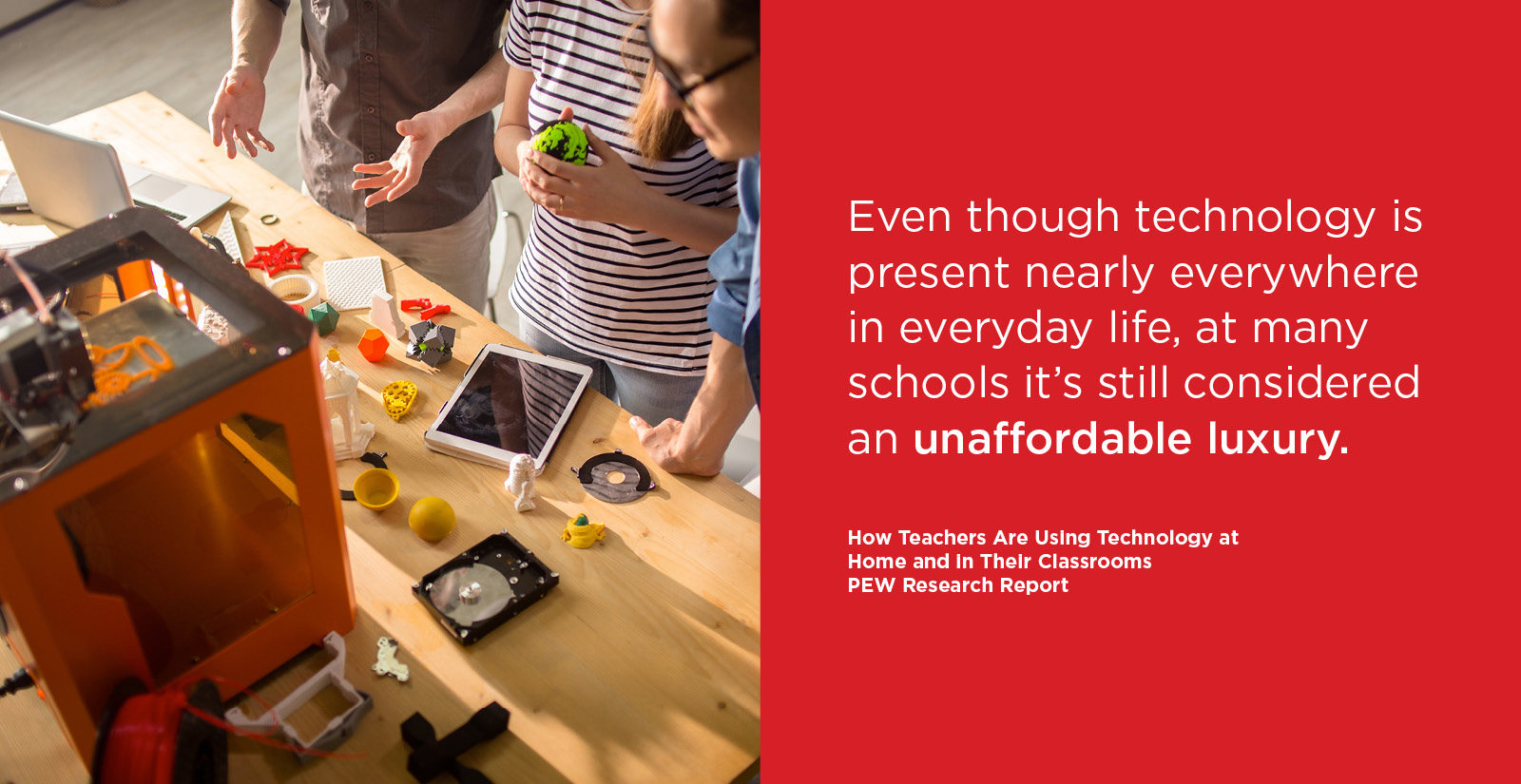Qontent by QOMO

Making Technology in the Classroom More Affordable
The benefits of integrating technology in the classroom are apparent. Technology in the classroom helps students concentrate and retain information, allows teachers to focus on individualized learning, and makes teaching more flexible and inclusive.
However, according to a Pew Research Center report, only 50% of teachers working in low-income areas feel their school does a “good job” at providing them with the resources and support needed to integrate technology in the classroom, compared with 70% of teachers working in high-income areas. Even though technology is present nearly everywhere in everyday life, at many schools it’s still considered an unaffordable luxury.
Here are some ways educational technology providers can help schools close the affordability gap and improve access to technology for underserved students.
1. Offer products that work with existing infrastructure.
Often schools are required to purchase not only new hardware, but completely new software and a load of other devices that happen to be the only thing compatible with the new hardware. This practice needs to stop. Everyday tech consumers don’t want products that require them to scrap everything they already have to make them work, and neither do teachers.It’s important to offer flexible, customizable products that offer preloaded software so they can work out of the box, and can be used with nearly any mobile device, application, or IT infrastructure already in use.
2. Provide customizable product bundles at a variety of price points.
One size fits all doesn’t always work for students, and it doesn’t work for schools, either. That’s why they should be able to mix-and-match products that meet their particular needs within their budget—and still get great results.While some schools might be well-matched with an interactive panel, others may only have room in the budget for a document camera and laser projector bundle or an interactive whiteboard for their classrooms. The smallest classrooms might only need a small interactive panel for collaborative work.
3. Include support in the price tag.
On top of the sticker price of a new interactive display, schools have to consider the cost of training teachers how to use them and getting tech support when they don’t work. The obstacle of preparing teachers to integrate technology in the classroom can be enough to turn schools off of educational technology altogether.
That’s why the relationship between educational technology providers and schools can’t just end after the purchase is complete.
Technology providers should be partners who are just as dedicated to the end results of integrating technology in the classroom as students and teachers. They should be available to provide training, consulting, and support as needed.
Improving access to technology in the classroom shouldn’t just be left up to schools. QOMO is dedicated to meeting them halfway to bridge the affordability gap.
Want to hear more of our thoughts or have a discussion about your educational technology needs? Get in touch with our team today to get to know us a little better.


